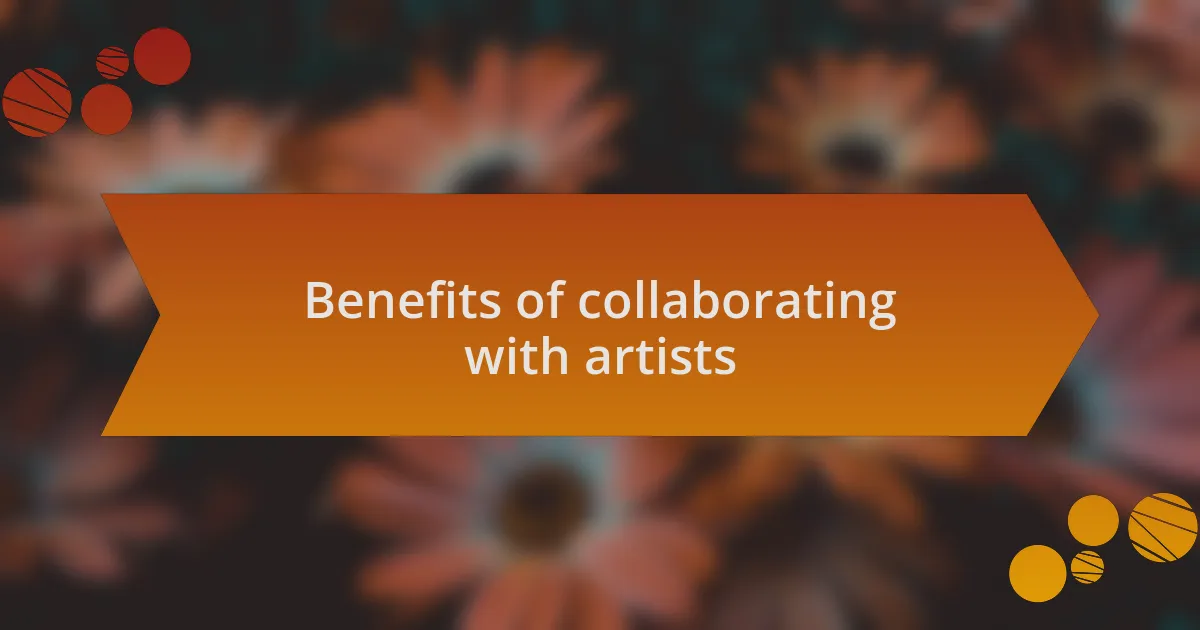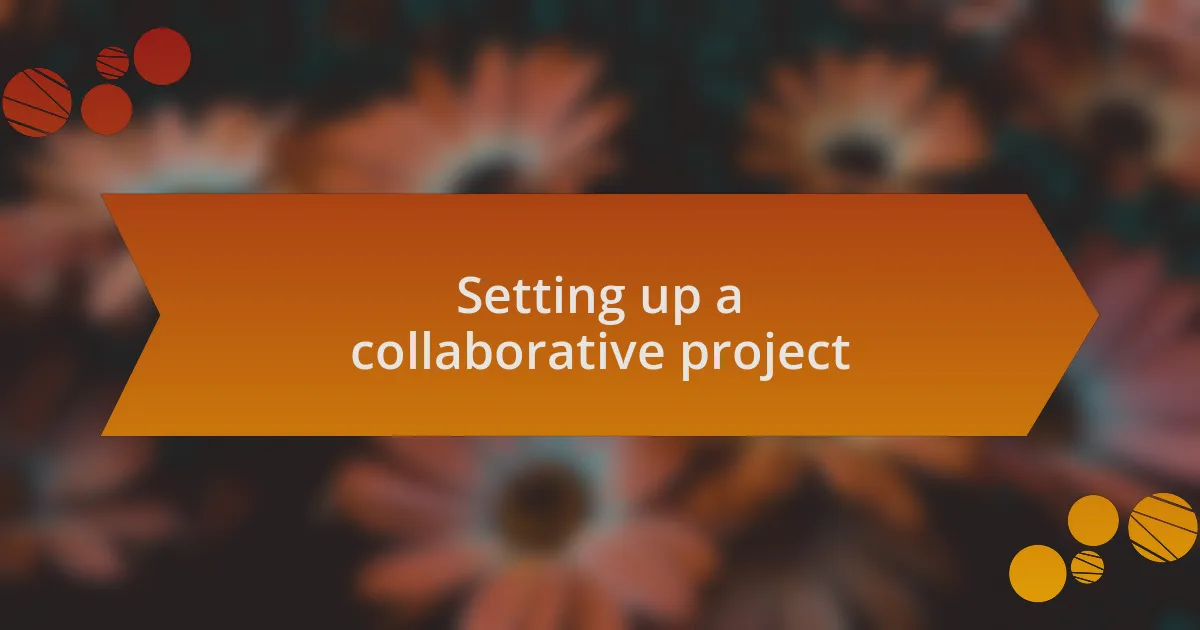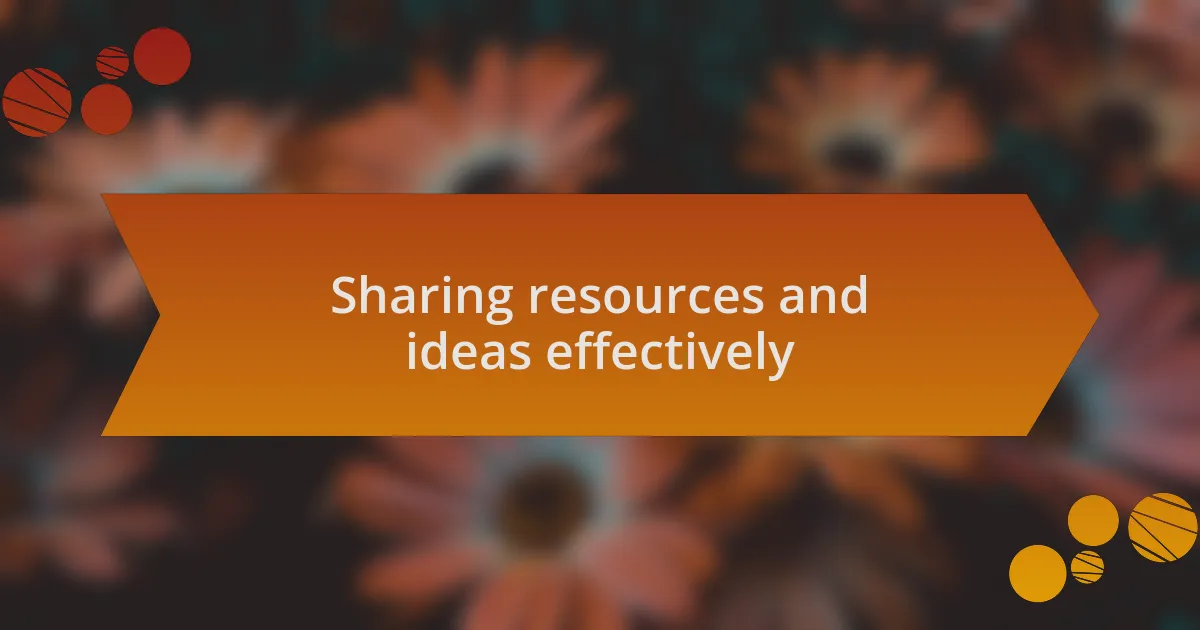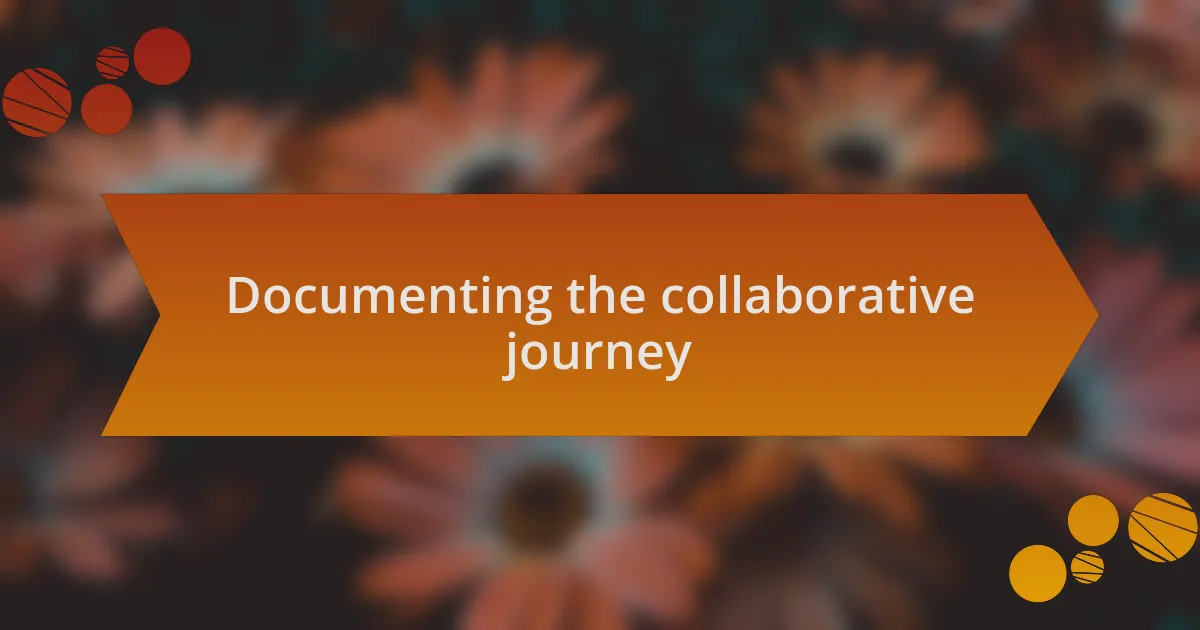Key takeaways:
- Art collaboration enhances creativity by merging diverse perspectives and fostering trust among artists.
- Effective communication and clearly defined roles are crucial for a successful collaborative project.
- Sharing resources and establishing feedback loops can significantly boost collective creativity and individual growth.
- Documenting the collaborative journey provides valuable insights and strengthens connections among artists.

Understanding art collaboration concepts
Art collaboration is a fascinating dance between creativity and shared vision. I remember my first collaborative project; it was a whirlwind of ideas, laughter, and, admittedly, a bit of chaos. It taught me that collaboration isn’t just about merging styles; it’s about building connections and trusting each other’s artistic instincts.
When artists come together, they often blend diverse perspectives, resulting in unique interpretations of a theme. It’s exhilarating to see how an artist’s personal experiences can inspire and reshape another’s work. Have you ever thought about how your own background could influence a collaborative piece? I’ve seen firsthand how the stories we carry can transform our art into something greater than the sum of its parts.
Moreover, it’s crucial to understand that the collaborative process requires patience and open communication. I recall a project where disagreements arose over our artistic direction. Instead of letting it divide us, we embraced the discussion, which ultimately enriched our final piece. Isn’t it fascinating how even conflict can lead to more profound insights and creativity?

Benefits of collaborating with artists
When I think about the benefits of collaborating with fellow artists, I often reflect on the sheer excitement of shared inspiration. One project stands out: we combined our individual strengths to create an immersive installation that resonated with so many. The beauty of collaboration lies in this interplay—think about how much more vibrant your work could become when infused with another artist’s unique approach.
Another significant advantage is the opportunity for skill exchange. I remember working alongside a sculptor who was adept in techniques that were completely foreign to me. As we exchanged methods and ideas, I not only learned new skills but my own work started to evolve in unexpected ways. Have you ever considered how collaborating could stretch your creative capabilities further than you thought possible?
Finally, collaborations can open doors to wider audiences. I once teamed up with a photographer for an exhibition, and together, we reached both of our fan bases. I realized that our joint efforts not only enhanced the art itself but also built a community around our work. Isn’t it incredible how reaching out to others can expand your impact in the art world?

Setting up a collaborative project
Setting up a collaborative project often starts with a shared vision among artists. I remember when I first reached out to a painter to brainstorm ideas; we met over coffee and spent hours discussing our mutual interests. That initial conversation sparked an idea that neither of us could achieve alone. Isn’t it fascinating how simple dialogue can lead to something extraordinary?
Once the concept takes shape, it’s essential to outline clear roles and responsibilities. In my experience, establishing accountability right from the beginning prevents misunderstandings down the line. I once dived into a project without defining who would handle what tasks, and it created confusion that could have been easily avoided. Have you considered how clarity can enhance the creative flow?
After defining roles, setting deadlines and milestones is the next critical step. I believe having a timeline keeps the momentum alive and helps everyone stay committed. In a previous collaboration, we set weekly check-ins to assess our progress, which not only kept us on track but also allowed for spontaneous brainstorming sessions. How do you keep your collaborative energy thriving throughout the project?

Choosing the right fellow artists
Choosing the right fellow artists is crucial to the success of any collaborative project. I recall a time when I gathered a small group of artists with diverse skills, each bringing something unique to the table. That mix created an environment brimming with creativity, yet it took time to find individuals who shared a complementary vision. Have you ever worked with someone whose style clashed with yours? It can be disheartening.
When I think about collaboration, I believe it’s essential to assess not just artistic skills but also personality traits. I once partnered with a skilled artist but soon realized their work ethic was misaligned with mine; it became apparent that passion without commitment can lead to friction. Have you considered how an artist’s approach and motivation can impact the entire dynamic of a project?
Trust and communication play key roles in choosing collaborators. I learned this firsthand when I teamed up with an artist whose transparency about their ideas fostered openness among the group. We all felt more confident sharing our thoughts, which ultimately elevated our project. Isn’t it incredible how a foundation of trust can transform a collaboration into a truly harmonious creative experience?

Sharing resources and ideas effectively
When it comes to sharing resources and ideas effectively, I often reflect on a project where we created a shared digital workspace. This space allowed us to post inspiration, sketches, and useful articles, which not only enriched our discussions but also provided a tangible way to visualize our evolving ideas. Have you ever experienced that “aha” moment when a shared resource sparks a new direction? It’s both thrilling and energizing.
I remember a time when one of my collaborators introduced a unique technique they used in their art, and that opened a door to a completely new approach for our group. We all took turns trying out each other’s methods, which fostered a sense of camaraderie and pushed our collective creativity. How often do we allow ourselves to step outside our comfort zones? It was during those moments of experimentation that I saw the most significant growth in my own work.
Establishing a regular feedback loop was another game-changer for us. We set up weekly check-ins where we could honestly critique each other’s work and share insights. The vulnerability involved in giving and receiving feedback can be daunting, but I’ve found that it strengthens the project’s foundation. Have you ever had that revelation during a critique that reshaped your vision? Honestly, those conversations led to breakthroughs I wouldn’t have reached alone.

Documenting the collaborative journey
Documenting our collaborative journey has been both a creative outlet and a pivotal learning experience. I often found myself journaling about our meetings, capturing not just the ideas that emerged but also the emotions that accompanied them. Do you remember how empowering it feels to document growth? There’s something magical about looking back at those notes and feeling the excitement of our shared discoveries.
Photography played a significant role in our documentation as well. I took pictures at different stages of our projects, from messy brainstorming sessions to finished pieces in an exhibition. Each snapshot told a story, revealing the energy and passion that infused our work. Isn’t it fascinating how visual documentation can evoke memories and emotions tied to those moments? It truly highlights the journey, not just the destination.
One memorable experience was creating a collaborative blog, where we each shared insights about our processes. It served not only as a record of our progress but also as a space for reflection. I remember reading my partners’ thoughts on their struggles and triumphs, which deepened my understanding of their artistic perspectives. How impactful is it to express vulnerability in art? This sharing not only strengthened our bond but also created a richer tapestry of ideas that I look back on with pride.

Reflecting on the collaborative experience
Reflecting on the collaborative experience has been a revelation for me. I remember sitting in after our final presentation, reviewing everything we’d accomplished together. There was a sense of fulfillment that settled in, reminding me how much our diverse skills harmonized, creating a body of work that none of us could have achieved alone. Isn’t it interesting how collaboration brings out strengths we may not even know we have?
One moment stands out vividly—the late-night discussions where we challenged each other’s ideas. I can still feel the rush of adrenaline that came with negotiating creative differences. Those debates, while sometimes intense, were incredibly enriching. They pushed me to articulate my thoughts more clearly and embrace feedback even when it was uncomfortable. Have you ever had your perspective shifted in a way that rocked your creative foundation? It’s moments like these that build resilience and deepen artistic insight.
Looking back, I cherish the unexpected friendships I formed through this process. Sharing vulnerabilities in our work led to a deeper understanding of each artist’s journey. I found comfort in knowing others faced similar doubts and struggles. Isn’t it heartwarming to realize that we are not alone in our creative battles? This bond not only enhanced our projects but also nurtured a supportive community that I continue to draw strength from.